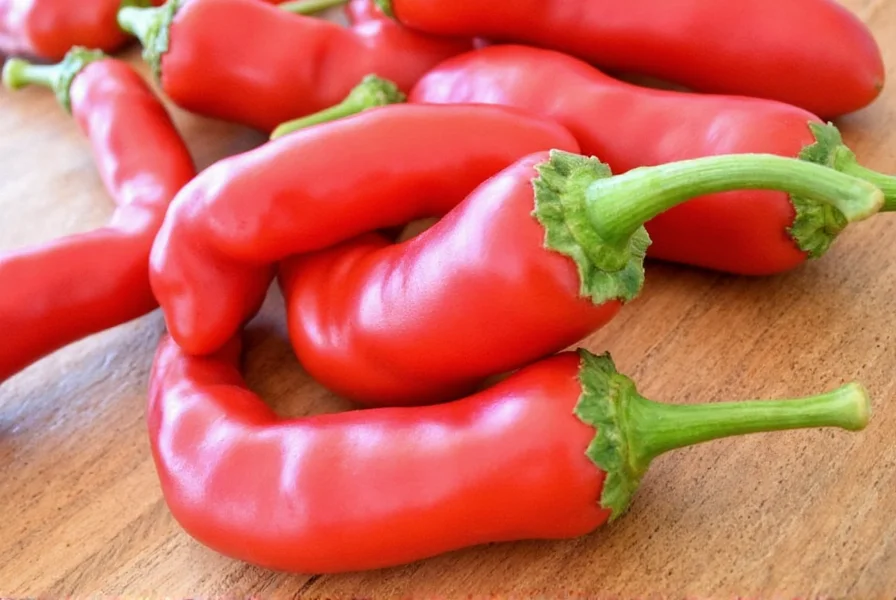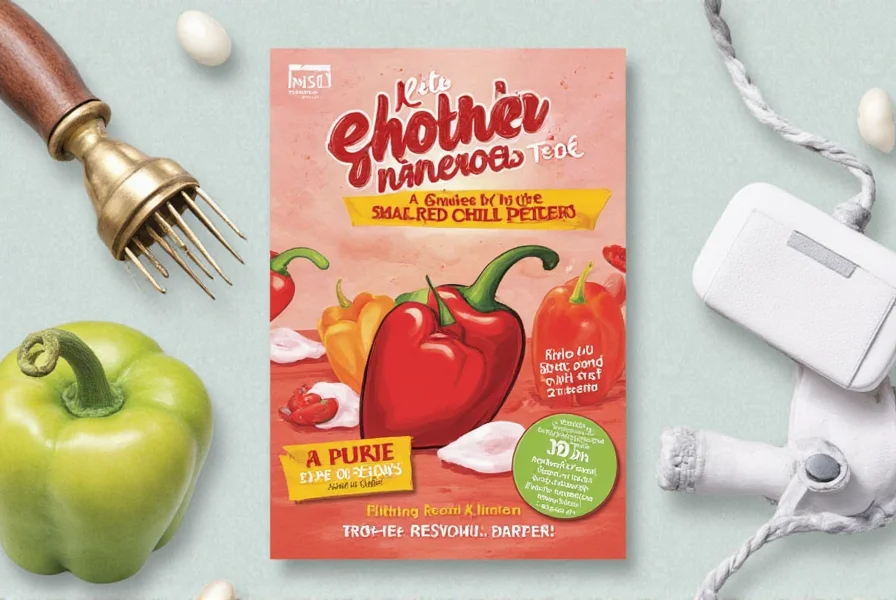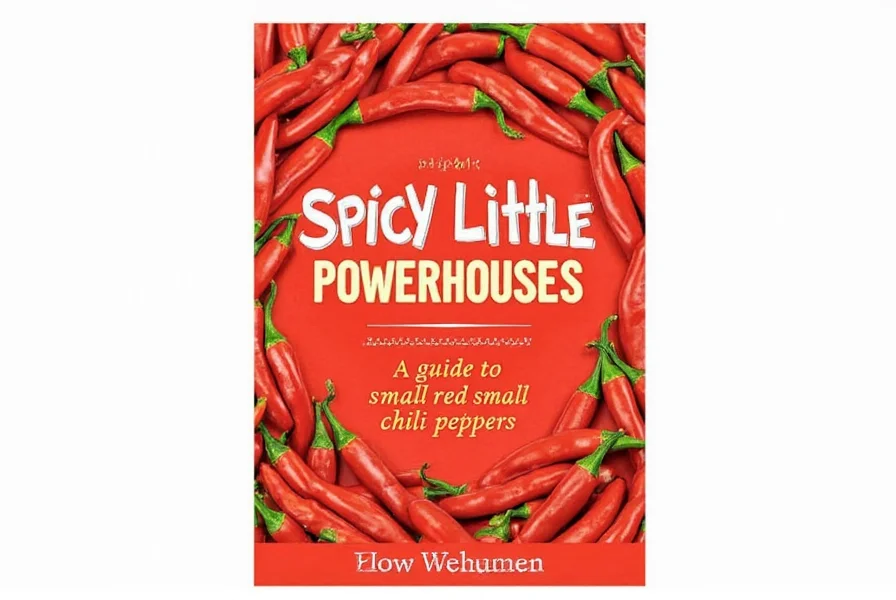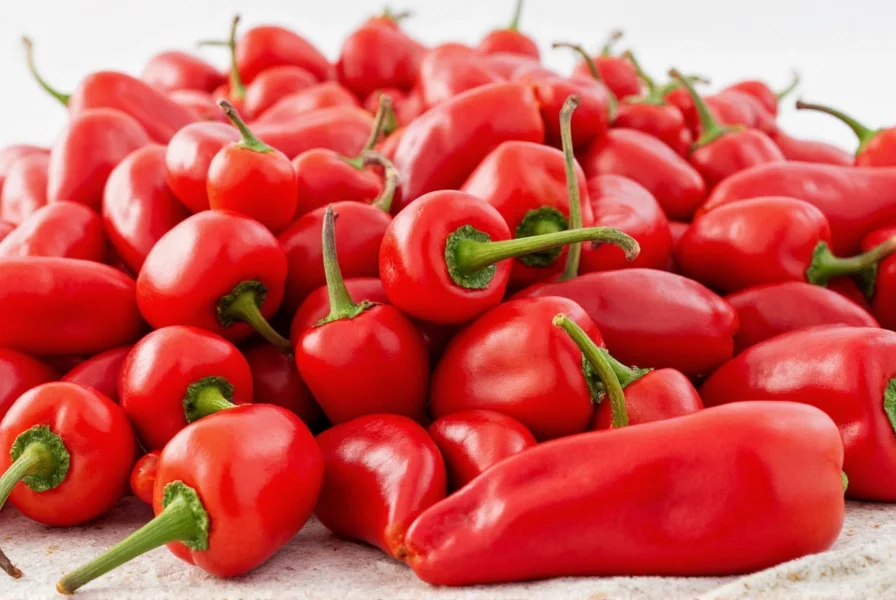Table of Contents
Introduction to Small Red Chili Peppers
Small red chili peppers, also known as bird's eye chilies or Thai chilies, are a variety of Capsicum annuum measuring 1-2 inches in length. These potent peppers deliver intense heat (50,000-100,000 SHU) while adding complex flavor to dishes across Southeast Asian, African, and Latin American cuisines. Despite their small size, they're a kitchen essential for spice enthusiasts.

Unlike milder peppers, small red chilies provide both fiery heat and rich, fruity undertones. Their versatility allows use fresh, dried, or powdered - each form unlocking unique flavor profiles for everything from salsas to curries and hot sauces.
Understanding Spice Levels in Small Red Chilies
Small red chili peppers rank significantly higher on the Scoville scale than common peppers. Their heat comes from capsaicin concentration, which varies based on growing conditions and ripeness. Here's how they compare to other popular varieties:
| Chili Pepper | Heat Level (SHU) |
|---|---|
| Small Red Chili Pepper | 50,000 - 100,000 |
| Jalapeño | 2,500 - 8,000 |
| Habanero | 100,000 - 350,000 |
| Serrano | 10,000 - 25,000 |

Key insight: While habaneros can be hotter, small red chilies deliver more concentrated heat per volume. Always start with 1-2 peppers when cooking, as their heat builds quickly. The red variety (fully ripe) contains 20-30% more capsaicin than green unripe versions.
Culinary Uses and Tips for Cooking with Small Red Chilies
These peppers transform ordinary dishes with their signature heat and flavor. Here are professional chef-approved applications:
- Thai Basil Chicken: Finely chop 3-4 peppers and sauté with garlic, soy sauce, and holy basil for authentic Thai flavor
- Homemade Sriracha: Blend 1 cup chopped chilies with 1/2 cup vinegar, 1 tbsp sugar, and 1 tsp salt. Ferment for 1 week before bottling
- Spicy Salsa Verde: Roast 6-8 peppers with tomatillos, onion, and cilantro for a smoky, complex salsa
- Chili Oil Infusion: Gently heat 1 cup neutral oil with 1/4 cup whole dried chilies and 2 star anise for 10 minutes. Strain and use for noodles or dumplings
Pro Tips for Handling:
- Always wear gloves when handling fresh chilies to prevent skin irritation
- Remove seeds and membranes for milder heat while retaining flavor
- Pair with dairy (yogurt, sour cream) to neutralize heat during consumption
- Toast dried chilies in a dry pan before grinding to enhance smoky notes

Buying Guide: How to Choose the Best Small Red Chilies
Quality varies significantly between fresh, dried, and powdered forms. Here's what to look for:
For Fresh Chilies:
- Color: Bright, uniform red with no brown spots or wrinkles
- Firmness: Should feel crisp and solid when gently squeezed
- Stem: Green and fresh-looking (not dried or brittle)
- Smell: Sharp, clean aroma without mustiness
For Dried Chilies:
- Appearance: Intact, plump pods with no cracks or mold
- Color: Deep red with slight sheen (avoid dull or faded colors)
- Texture: Should bend slightly without breaking
- Weight: Heavy for size indicates good moisture content
For Chili Powder:
- Color: Vibrant red (not brownish or grayish)
- Smell: Strong, spicy aroma without mustiness
- Texture: Fine, uniform powder (no large chunks or grit)
- Source: Look for products specifying "100% small red chilies" without fillers

How to Store Small Red Chilies for Maximum Flavor
Proper storage preserves heat and flavor for months. Follow these science-backed methods:
For Fresh Chilies:
- Refrigerator (1-2 weeks): Place in paper towel-lined airtight container. Do not wash before storing
- Freezer (6 months): Wash, dry completely, chop, and freeze in single layer on baking sheet before transferring to freezer bags
- Vinegar Preservation (1 year): Submerge whole chilies in white vinegar in sterilized jar. Store in refrigerator
For Dried Chilies:
- Dark, cool place (12 months): Store in airtight glass jar away from light and heat sources
- Grind only when needed: Whole dried chilies retain flavor 3x longer than pre-ground powder
- Moisture control: Add food-safe silica packets to container to prevent clumping
Frequently Asked Questions About Small Red Chili Peppers
What are small red chili peppers?
Small red chili peppers (Capsicum annuum) are 1-2 inch long peppers known as bird's eye or Thai chilies. They're native to Southeast Asia but used globally. When ripe, they're bright red with intense heat (50k-100k SHU) and fruity undertones. They're essential in Thai, Vietnamese, African, and Mexican cuisines.
How hot are small red chili peppers compared to other common peppers?
Small red chilies rate 50,000-100,000 Scoville Heat Units (SHU), making them 15-20x hotter than jalapeños (2,500-8,000 SHU) but milder than habaneros (100k-350k SHU). They're 4-5x hotter than serranos (10k-25k SHU) and similar to cayenne peppers. The heat is concentrated in the seeds and white membranes.
What's the difference between red and green small chili peppers?
Green chilies are unripe versions of red ones. Green peppers have a grassier, more vegetal flavor with slightly lower heat (40k-80k SHU). Red chilies are fully ripe, sweeter, and contain 20-30% more capsaicin. They also have higher levels of vitamin A and antioxidants. Most recipes call for red chilies for maximum flavor and heat.
Can I substitute other peppers for small red chilies in recipes?
Yes, but adjust quantities carefully. For fresh substitutions: use 1 serrano pepper per 2 small red chilies, or 1/2 habanero for every 3 small red chilies. For dried: 1/4 tsp cayenne powder equals 1 small red chili. For milder dishes, try red jalapeños but double the quantity. Always taste as you go - heat levels vary by pepper batch.
Are small red chili peppers healthy?
Yes. Per 100g, they contain 144mg vitamin C (160% DV), 1,400 IU vitamin A (28% DV), and capsaicin which studies show boosts metabolism by 5-8% and reduces inflammation. They're also rich in potassium, iron, and antioxidants. However, those with IBS or acid reflux should consume in moderation due to potential digestive irritation.
How can I reduce the heat of small red chili peppers?
Remove seeds and white membranes (contains 80% of capsaicin). Soak chopped chilies in milk or yogurt for 15 minutes before cooking. Add acid (vinegar, lime juice) or sugar to balance heat. For cooked dishes, simmer longer as capsaicin breaks down with prolonged heat exposure. Always wear gloves during preparation to avoid skin irritation.
Can I grow small red chili peppers at home?
Yes! They thrive in warm climates (70-90°F) with 6+ hours of direct sunlight. Plant seeds indoors 8-10 weeks before last frost in well-draining soil. Transplant when temperatures stay above 70°F. Water consistently but avoid overwatering. Harvest when peppers turn bright red (70-90 days after planting). Container gardening works well with 12+ inch pots.
Conclusion
Small red chili peppers deliver outsized flavor and heat that transform ordinary dishes into culinary masterpieces. Whether you're making authentic Thai curries, homemade hot sauces, or spicy salsas, these versatile peppers are indispensable for serious cooks. By understanding their heat profile, proper handling techniques, and storage methods, you'll unlock their full potential while avoiding common mistakes that lead to over-spiced dishes.
Start with small quantities when experimenting, and remember that the heat builds gradually. With proper technique, you'll harness their complex fruity notes and fiery punch to elevate any meal. Keep a supply on hand - these little powerhouses are the secret weapon of professional chefs worldwide.











 浙公网安备
33010002000092号
浙公网安备
33010002000092号 浙B2-20120091-4
浙B2-20120091-4